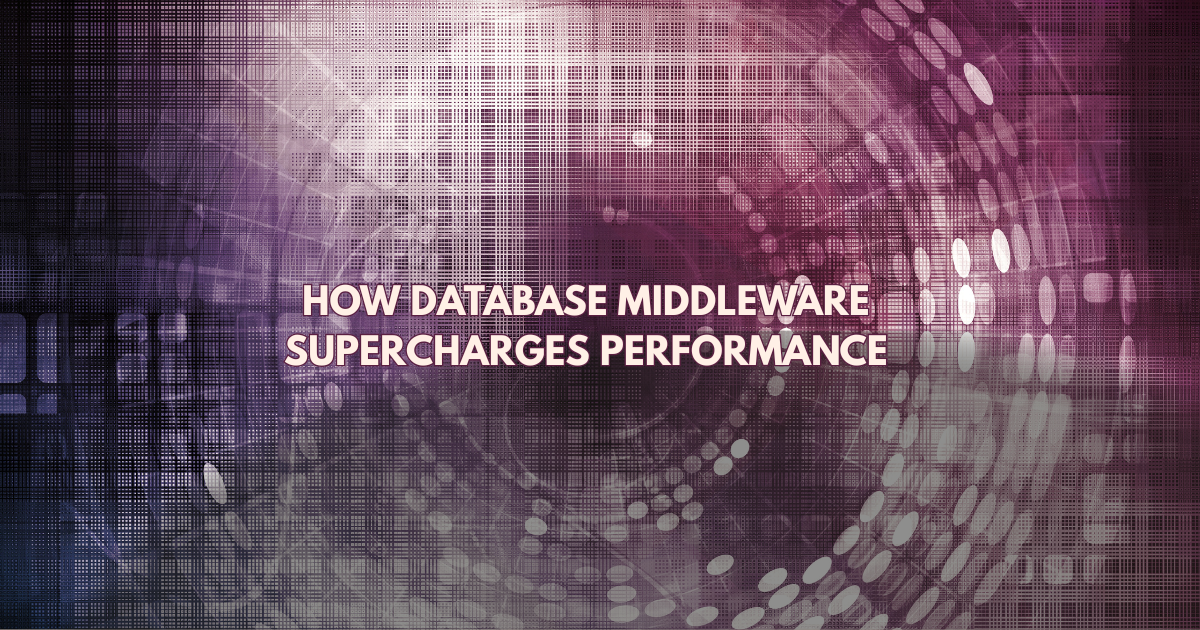How database middleware supercharges performance
Fast databases power successful applications. Slow queries or overloaded servers can frustrate users, drive up costs, and negatively impact business outcomes. Database middleware changes the game by bridging applications and databases, slashing wait times, and boosting efficiency. This article explores how middleware delivers top-tier performance, providing practical insights for developers and IT teams.
The role of database middleware
Database middleware serves as an intermediary, managing the communication between applications and databases. It handles tasks such as query processing, connection management, and data caching, thereby easing the load on database servers. By streamlining data flow, middleware cuts delays and keeps systems running smoothly. Instead of apps accessing the database directly, middleware intervenes to optimize every interaction.
Why middleware fuels speed
High query volumes or complex transactions can overwhelm databases, resulting in sluggish performance. Middleware solves this by distributing workloads and minimizing direct database calls. Faster responses mean happier users and lower operational costs. For businesses, this translates to better customer retention and leaner infrastructure.
Boosting query performance
Middleware accelerates data retrieval through smart techniques. Improve database speed comes from caching frequently accessed data, so apps don’t repeatedly query the database. For example, an e-commerce app fetching product specs can pull cached data instantly. This speed boost keeps users engaged and systems responsive.
Smart middleware strategies
Middleware optimization techniques drive performance gains. Connection pooling reuses database connections, thereby avoiding the overhead associated with creating new ones. Load balancing spreads queries across servers to prevent bottlenecks. Query optimization rewrites complex requests for faster execution. Together, these strategies ensure that applications handle heavy traffic without breaking a sweat.
Building a high-speed data framework
Middleware creates a high-performance data architecture by integrating tools such as Redis for caching and sharding for data partitioning. This setup reduces database strain and speeds up access, even during traffic spikes. For instance, streaming platforms rely on such frameworks to deliver content to millions without lag, ensuring reliability under pressure.
Scaling without the hassle
Growing user bases demand databases that scale effortlessly. Middleware offers solutions to handle increased loads while maintaining performance.
Scaling databases with ease
Database scalability solutions via middleware let systems grow without slowdowns. Middleware supports horizontal scaling by spreading workloads across multiple servers. It also enables sharding, splitting data by criteria like user region for faster access. These methods maintain steady performance as apps expand, which is critical for businesses with growing demands.
Dynamic resource adjustment
Adaptive middleware for dynamic scaling responds to real-time changes in traffic. During a sudden surge, such as a Black Friday sale, middleware allocates more connections to handle the increased load. When traffic dips, it scales back to save resources. This flexibility prevents over-provisioning, keeping costs down while ensuring speed. Cloud-based middleware, such as AWS ElastiCache, excels in these scenarios.
Simplifying database operations
Middleware automates complex tasks, making database management more efficient and streamlined. Streamlining operations with middleware includes automating data syncing and error handling. Middleware detects issues, such as dropped connections, and resolves them before users are aware. It also provides monitoring dashboards to track performance, enabling teams to spot and resolve issues quickly. This automation saves time and reduces manual work.
Middleware at the edge
Edge computing brings data processing closer to users, cutting latency. Middleware enhances this by optimizing data delivery in distributed setups.
Speeding up edge performance
Optimizing edge computing with middleware ensures rapid data access in decentralized systems. Middleware caches data at edge nodes, reducing reliance on central servers. For example, a content delivery network (CDN) can serve videos or images instantly using local caches. This reduces latency for global users and secures data transfers, delivering a smoother and safer experience.
Picking the right middleware
Choosing middleware depends on your needs. Open-source tools like Apache Ignite are suitable for smaller teams, while enterprise options like IBM WebSphere offer advanced features for larger setups—factors like database type, traffic patterns, and budget guide the decision. Testing in a sandbox environment ensures the middleware aligns with your system before going live.
Balancing benefits and challenges
Middleware boosts performance but adds complexity. Teams need skills to configure and maintain it. Misconfigured middleware can create new bottlenecks, undoing its advantages. Regular monitoring and updates keep it running smoothly. Security is also key—middleware must use strong encryption and access controls to safeguard data.
Database middleware transforms how applications interact with databases, delivering faster queries, better scalability, and streamlined operations. Through caching, load balancing, and dynamic scaling, middleware keeps systems responsive under pressure. Whether speeding up edge computing or supporting high-traffic apps, middleware is a must-have for performance-driven teams. Choosing the right solution equips businesses to meet growing demands while keeping users happy.
Struggling with slow queries or scaling issues?
Novas Arc helps tech teams implement high-performance middleware strategies—like caching, sharding, and load balancing—to eliminate bottlenecks and cut latency.
Reach out to Novas Arc to build a faster, smarter data layer for your applications.
FAQs
Q1. What is database middleware, and how does it work?
Database Middleware is a software layer that sits between applications and databases, managing their interactions. It handles tasks like query processing, connection management, and data caching to reduce database strain. Middleware works by intercepting application requests, optimizing them (e.g., through caching or query rewriting), and routing them to the database efficiently. It then returns results to the application, minimizing direct database hits and speeding up data flow.
Q2. How does middleware improve database performance?
Middleware enhances database performance by employing techniques such as caching frequently accessed data, pooling database connections to minimize overhead, and load balancing to distribute queries across multiple servers. For example, caching product details in an e-commerce app reduces repetitive queries, cutting response times. These Middleware Optimization Techniques can reduce latency by up to 60% in high-traffic scenarios, ensuring faster and smoother operations.
Q3. Can database middleware help with scalability as well as performance?
Yes, middleware supports both Database Scalability Solutions and performance. It enables horizontal scaling by spreading workloads across multiple servers and supports sharding to split data for faster access. Adaptive Middleware for Dynamic Scaling adjusts resources in real-time, such as during traffic spikes, ensuring consistent performance as user demand increases. This dual role makes middleware essential for High-Performance Data Architecture.
Q4. What are common examples of database middleware tools?
Popular db middleware tools include Apache Ignite for in-memory data processing, Redis for caching, and MySQL Router for query routing. Enterprise options, such as Oracle WebLogic and IBM WebSphere, offer advanced features for large-scale systems. These tools support Streamlining Operations with Middleware and Optimizing Edge Computing with Middleware by providing efficient data management and low-latency access in distributed environments.
Author








